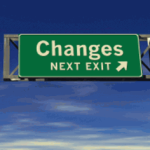Every disease has a group of signs and symptoms. Anxiety Disorders are no different.
However, anxiety disorders are peculiar in that there is no way to test for them.
You can’t draw blood, or provide some other kind of sample that will tell a doctor if you’re sick with nerves.
So then, how are anxiety disorders diagnosed? Excellent question.
It starts with a visit to your doctor. During the visit your doctor will:
1. Review your medical history.
2. Ask you about your symptoms.
3. Test you for everything that’s related to your symptoms.
If your doctor can’t find anything wrong with you physically, then you’ll be moved on to the next stage.
This usually means a referral to a psychiatrist or psychologist. During your first session you’ll be evaluated with a series of questions designed to diagnose different mental conditions.
For anxiety disorders, these questions deal with things like:
— How much you worry.
— How disruptive anxiety is to your daily life.
— Drug or alcohol abuse.
— Anxiety related symptoms like panic, fatigue, sleep patterns, and so on.
The general rule of thumb is that if you’ve experienced excessive anxiety and worry for more than 6 months, then you likely have an anxiety disorder.
Another key indicator of an anxiety disorder is if you experience anxiety absent a stressful situation. So if you often become anxious for no reason, this could suggest an anxiety issue. In that sense, the context of your anxiety episodes matter.
Of course, only a qualified mental health care professional can tell you what you’ve got for sure.
Unfortunately, at this time the diagnosis of anxiety disorders is somewhat subjective. There is general criteria provided by the Diagnostic and Statistical Manual of Mental Disorders (DSM-IV-TR 4th Edition), but it’s still up to the therapist to make the call.
But, despite potential drawbacks to current diagnostic techniques, it’s still good to be evaluated by a qualified mental health care professional. Once you have a clear diagnosis you can stop your guess work and get busy finding solutions to your specific problem.
[poll id=”12″]






It says if you have been experiencing excessive anxiety and worry for 6 months or more then you likely have an anxiety disorder. What if you’ve only been experiencing the symptoms for a couple of months? What would they call it then?
Hi Steve,
6 months is the benchmark but, that doesn’t mean that having anxiety issues for 1,2, or 3 months is normal, either. If you’ve had ongoing anxiety for two months it would be a good idea to see a doctor.
Thanks Paul.
Can you tell me what is the connection between anxiety and being lightheaded?
I seem to have it happen randomly for no particular reason. It eases up if I lay down
But it lasts for hours if I’m standing.
Hey Steve,
Light-headedness and confusion are staples of anxiety. For some, I’d imagine they are the primary symptom. While I’m far from a physician, I’d imagine this is simply the work of adrenaline and misplaced bodily chemistry. I never cease to be amazed by the array of goofy symptoms that anxiety can give me, and how they can even present themselves differently from time to time. That’s one frustrating thing for me, is that I seem to get “new” symptoms all the time. Of course, new experiences are harder to accept than ones you’ve been through, but the key still remains acceptance.
It is interesting that laying down seems to help. I wonder if this is something physical… or, if by laying down you’re simply giving your body a rest, and your mind a simple way to cope… thus easing the symptoms in general.
This could also be mild blood-pressure changes. Nothing to worry about. I have very low blood pressure, so I’m used to getting light-headed from time to time. Not dangerous at all, as long as you’re within a healthy range, and I’m sure you’ve been checked for something that basic.
So, try to relax and accept it… and even lay down when you can, and think about laying down when you can’t. It’s a common, harmless symptom. Good luck.